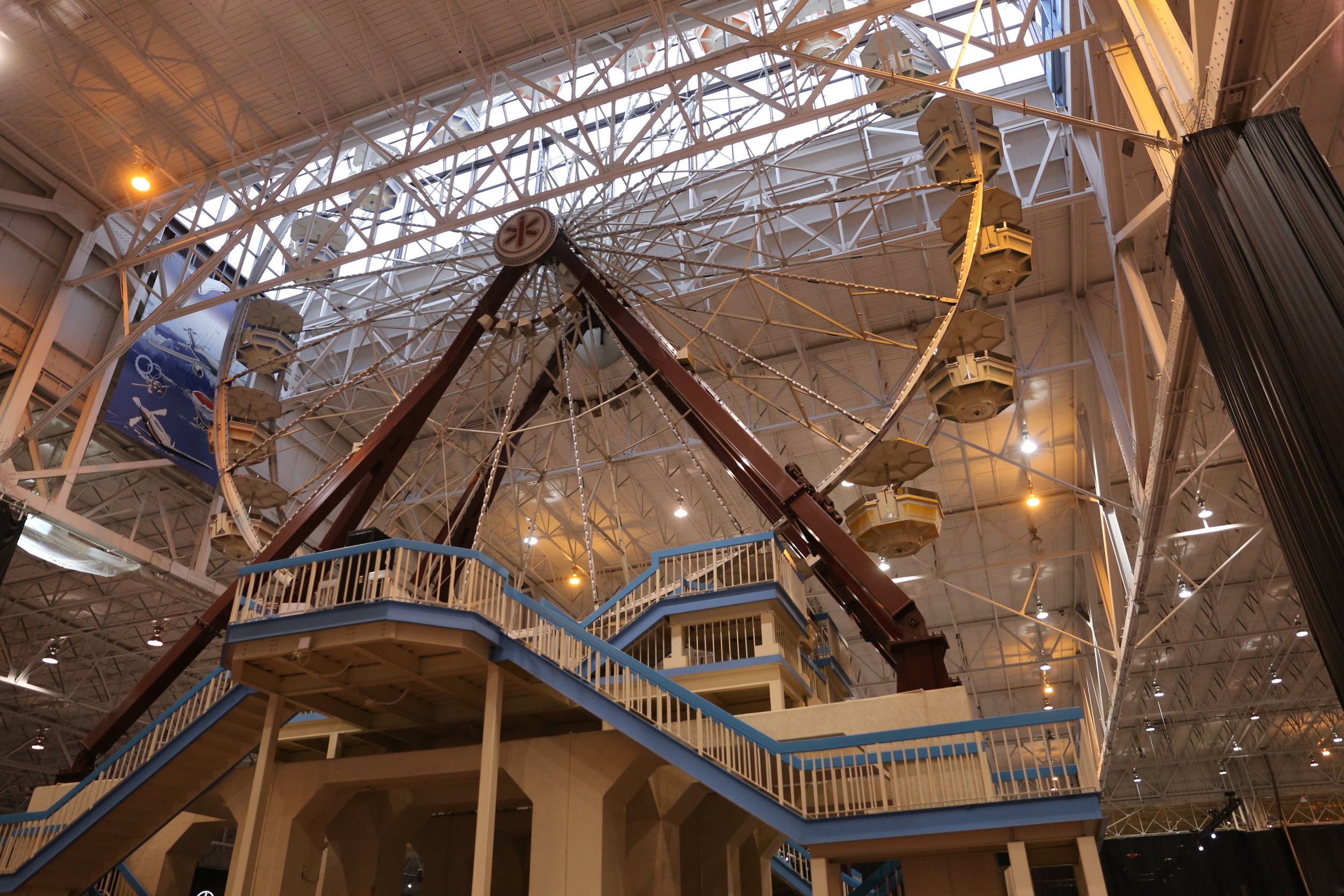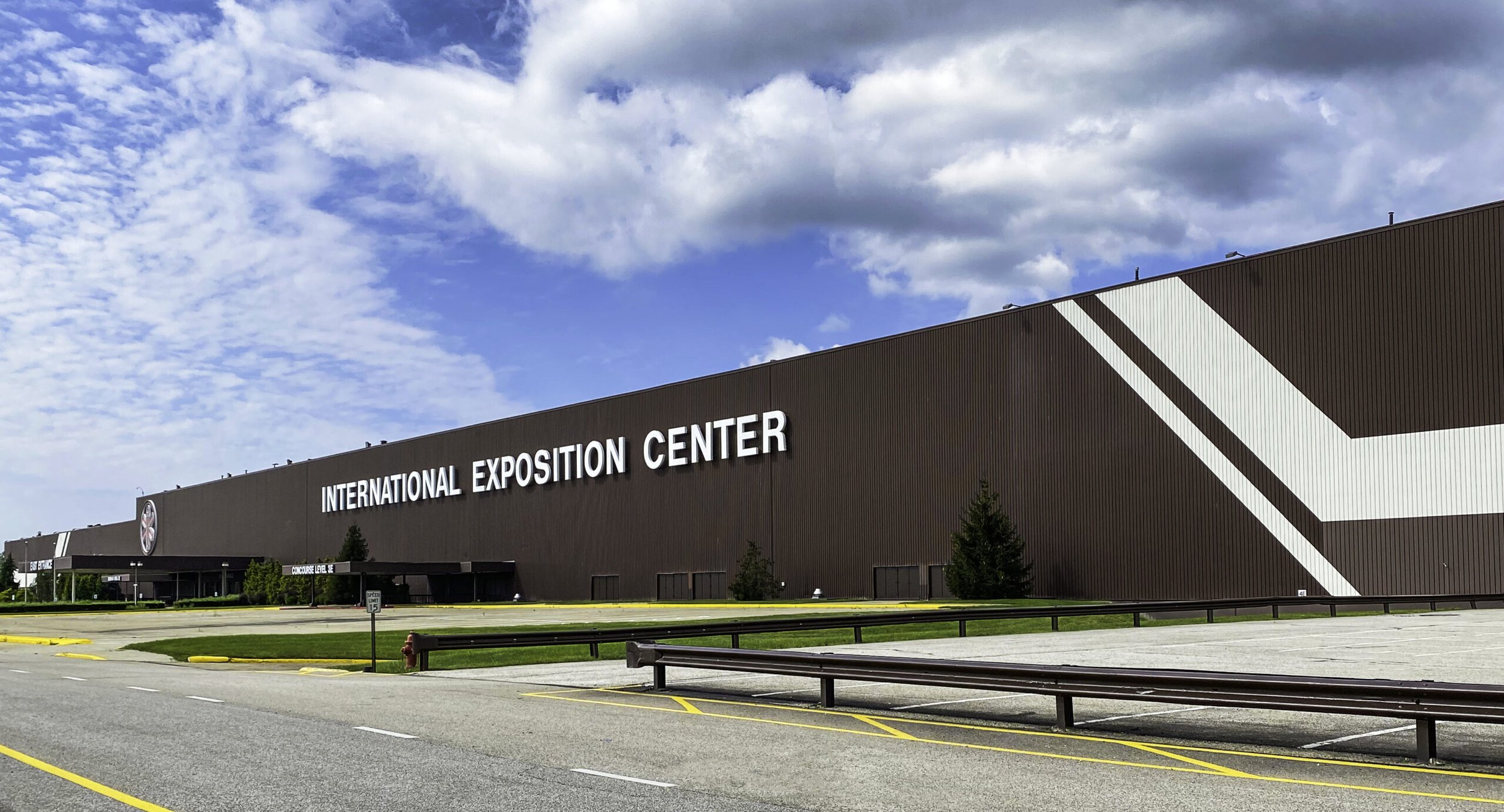Cleveland’s I-X Center’s Next Chapter
For over 40 years, the I‑X Center in Cleveland was a landmark destination, home to beloved traditions like the Cleveland Auto Show, Home & Garden Expo, and the Indoor Amusement Park. Drawing more than two million visitors annually, it wasn’t just an event space; it was part of Cleveland’s culture. However, in June 2025, a major turning point arrived. Cleveland’s City Council approved a new lease agreement with Industrial Realty Group (IRG) that will transform the I‑X Center from an exhibition space into a corporate campus. A Fortune 500 company is expected to occupy more than half of the facility, marking the end of an era and the beginning of a bold new economic vision.
Construction Roots & Transformation
Spanning 2.2 million square feet, the I‑X Center is one of the largest indoor venues of its kind. But its roots go even deeper than consumer expos:
1942: Built in just over a year as the Fisher Body Aircraft Plant No. 2 to assemble B-29 bombers during WWII.
Post-war era: Repurposed to produce military tanks into the early 1970s.
1985: Industrialist Ray Park transformed it into the International Exposition Center, launching its run as a mega event venue.
It once housed the world’s tallest indoor Ferris wheel—125 feet tall!
2001: Purchased by the City of Cleveland for $66.5 million.
2020: Operations paused due to COVID-19. Since then, the shift toward private use has gradually taken shape.
Though construction plans haven’t been publicly detailed, the transition to corporate use will likely include:
Demolition of exhibition infrastructure
Build-outs for offices, tech labs, or light industrial use
Infrastructure upgrades (power, HVAC, fiber, sustainability retrofits)
End of an Era
This shift also signals the official end of decades-long exhibition traditions, which has been difficult for many. Over the past decade, signature events like the Auto Show and Boat Show have steadily downsized, using only a fraction of the floor space they once filled. Visitors have noticed fewer vendors, less excitement, and a shrinking sense of community. Several major events are exploring relocation to other venues like the Huntington Convention Center downtown. While organizers are open to modernizing and adapting, many feel the transition has been rushed, with limited support or communication from city officials and IRG.
Legal Disputes & Tensions
Before the pandemic, many event organizers had long-term contracts in place to host shows at the I‑X Center through 2024 or later. When the shift to corporate leasing was announced, lawsuits quickly followed. Organizers argue that their contracts were valid and that the venue’s sudden pivot represents a breach. These legal actions show how deeply these events are embedded in Cleveland’s economy; supporting small businesses, vendors, and community programs that relied on the annual cycle of shows.
Adding to the tension is a transparency gap. Many stakeholders feel excluded from the decision-making process. The result? A breakdown in trust between longtime partners and city leadership.
Potential for Reinvention
The I‑X Center’s massive footprint and industrial-grade infrastructure give it incredible potential for reinvention:
Flexibility
1M+ sq. ft. of clear-span space supports open-plan offices, labs, and light manufacturing.
Existing HVAC, plumbing, and power reduce the need for major rebuilds.
Multi-Tenant Potential
Its scale allows for a corporate campus with multiple business units.
Ideal for advanced manufacturing, logistics, aerospace, and tech operations.
Sustainability Opportunities
The expansive roof could host solar panels.
Its interior could support vertical farming or robotics testbeds.
May qualify for LEED retrofits or brownfield redevelopment incentives.
Ultimately, the I‑X Center’s transformation isn’t just about real estate. As Cleveland evolves, the city faces a key question: Should its landmark venues prioritize public culture or private commerce? Some see the shift as a much-needed economic boost. Others see it as a loss of shared space, one that once brought people together. As the city navigates this change, its success will depend on how well it balances growth with inclusivity; ensuring that progress doesn’t come at the expense of the very people and events that once gave the space its identity.
Sources:


